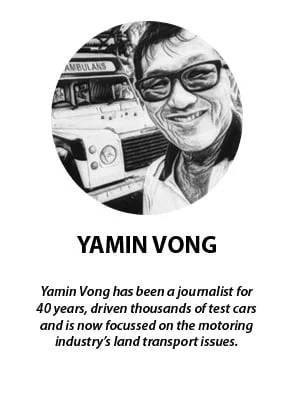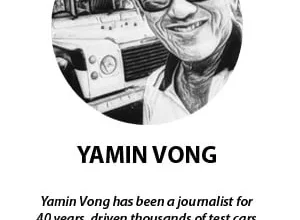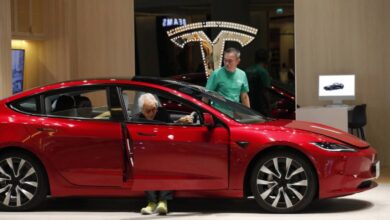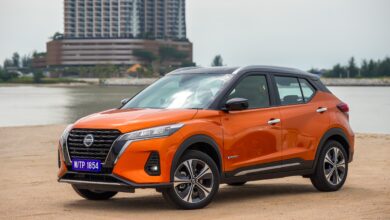China offers value-for-money EVs, but consider other factors

[ad_1]
It’s all very well for Malaysian car buyers who have been wooed by more than 10 new and attractive Chinese car models over the past few months.
The latest of this is BYD’s multipurpose van, a seven-seater M6 (MPV), being sold for an incredible value-for-money price starting from RM110,000.
BYD is the world’s largest EV car maker by unit sales.
The BYD M6 is a battery electric vehicle (BEV) and its price pushes the roomy MPV way beyond price-parity, a term that climate change economists created to describe the point at which the price of electric vehicle sales would be on par with equivalent internal combustion engine (ICE) vehicles.
While the ascendance of Chinese car companies presents unprecedented opportunities both to car buyers as well as investors, there are other considerations.
For the car buyer, the value-for-money proposition is unarguable. Malaysian car buyers who would not have considered buying a Chinese car just six months ago are now talking about it.
But in the longer term, there is the worry that some brands might withdraw from less significant overseas markets such as Malaysia, relative to say, Indonesia and Thailand with their bigger populations.
When brands downsize, car owners are likely to face difficulty with spare parts, meaning lifetime or 1,000,000km warranties may end up irrelevant. This has already happened with legacy brands such as GM and stranded Chevrolet owners, and it can happen again with new brands from China.
On the other hand, some of the top car makers in Beijing and Shanghai are state-owned enterprises. They are also quite advanced and too big to fail. On top of that, there is the Chinese cultural aversion to losing face which may also come into play.
China became the world’s largest car market in 2009 when it overtook the US in unit sales. Since then, China’s market has continued to expand significantly with a strong emphasis on electric vehicles.
Since then, the number of car makers has consolidated to about 90, from some 500 marques. All the top Chinese brands are already in Malaysia, some in their own right and others through franchises awarded to domestic Malaysian companies.
As for the privately-owned car companies, the most famous of which is BYD, they are pushing the frontiers of battery technology.
Their vertical integration of the manufacturing processes and re-engineering of EVs have pushed China’s auto industry years ahead of legacy car makers. For instance, they have decided that EVs do not need the traditional gearbox and are instead integrating its four components into an e-axle.
On the macro side of things, Malaysia’s investment, trade and industry ministry has demonstrated a commendable agility in attracting automotive investments from technology leaders such as Tesla as well as some of China’s top 10 car makers.
And this is where Malaysia’s National Automotive Policy 2020 (NAP 2020) is likely to be updated, drawing from hints dropped by Tengku Zafrul Aziz, the investment, trade and industry minister.
One of the major revisions that should be considered is to include plug-in hybrid vehicles (PHEVs) in NAP 2020. Currently, Malaysia’s fiscal policy to incentivise the decarbonisation of the land transport sector is limited to waiving taxes on battery electric vehicles (BEV) but not PHEVs.
There appears to be two different approaches to PHEVs. Europe’s car makers’ want to make them powerful cars capable of doing 0-100km sprints in less than five seconds.
On the other hand, China’s approach is to use PHEV technology to promote fuel economy, employing 55 kW batteries for about 100km of pure electric drive.
One more element to be reviewed in the NAP2020 is how to attract the so-called New Force companies such as Xioami and Huawei, both phone makers, to Malaysia.
Chinese cars are great for connectivity and Advanced Driving Assistance Systems (ADAS), with these New Force companies leading the way.
One certainty about the automotive industry and the supply chain in Malaysia and Southeast Asia is that Japan’s dominance will be overtaken. The effect on its supply chain will be brutal.
Geely is one of China’s top car makers and is by and large a privately-owned company.
Ultimately, as far as Malaysia is concerned, any review of the NAP must set out clearer achievements for completely knocked down (CKD) EVs in terms of the localisation of their components by Chinese car companies.
An auto industry chief who declined to be identified said there must also be specific milestones on supply chain and electronic components for the next generation of intelligent mobility.
“Vehicles will have a shorter lifespan due to continuous advancement in the electronics and micro-chip industry which is now a critical part of the supply chain.
“A review of the NAP must address technology innovations in mobility and the impact on a circular economy. It should show the way for a clear and practical transition to electrification of mobility,” he said.
Yamin Vong can be reached at his Facebook page, yamin.com.my.
The views expressed are those of the writer and do not necessarily reflect those of FMT.
[ad_2]





